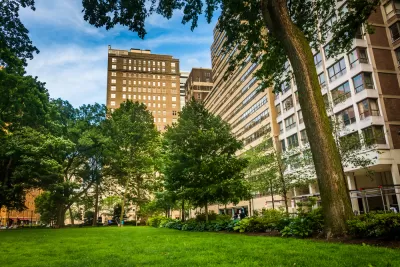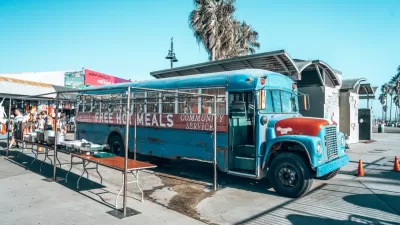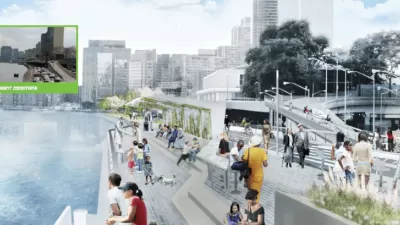Some people fear tall buildings near parks, asserting that such buildings will reduce sunlight. But because many parks are a block or more wide, this impact is likely to be minimal.

When I was running for Manhattan Borough President this fall, I had only one real debate focused on land use with my Democratic opponent (who won the election handily, as I expected). We did not have many areas of disagreement, but we did have different perspectives on one narrow issue: the relationship between sunlight and large-scale development, especially near parks. He was concerned that tall buildings near parks might negatively affect sunlight, because I live two blocks from Central Park and have never felt sunlight-deprived in the park, I was more skeptical.
My opponent then brought up a question about sunlight in smaller parks: In a park that is just one or two square blocks, could tall buildings block out the sun? I visited a park he mentioned and didn't see a problem. It was not really a fair test, however, since this particular park was separated from tall buildings by some fairly wide streets.
Later on, it occurred to me that Philadelphia (where I lived some years ago, and visited in 2020) has two downtown parks surrounded by at least some tall buildings: Rittenhouse Square and Washington Square. Rittenhouse Square is surrounded by numerous 10-20 story buildings, while Washington Square is next to some tall buildings and some shorter buildings. Both parks are mostly surrounded by narrow, pre-automobile streets—yet even a casual look at Google Street View shows that these parks have sun as well as shade.
In fact, it seems to me likely that parks near tall buildings are less likely to suffer inadequate sunlight than almost any street. In my experience, the least sunny streets in Manhattan are the oldest, narrowest streets of lower Manhattan. (To see an example, go to 99 John Street on Street View.) These streets are so narrow that tall buildings really can limit sunlight. By contrast, a wide street such as 34th Street or Fifth Avenue can be sunny despite the presence of tall buildings. As I wrote on this very site seven years ago, "the wider the street, the more sun."
It follows that if you are trying to ascertain the effect of tall buildings on park space, you should ask yourself: Is the park more like the 18th-century streets of Manhattan's Financial District, or more like mid-Manhattan’s wide avenues? Rittenhouse Square, like most significant public squares, is more than a block wide, which means that it is at least a few hundred feet wide—several times as wide as even an automobile-oriented stroad. So it seems to me unlikely that the tallest buildings would reduce sunlight at the heart of a park the size of Rittenhouse Square. It logically follows that if you are worried about the impact of tall buildings on sunlight, you should actually be less worried about placing them on parks than on ordinarily four-block wide American streets, and less worried about placing them on wide streets than on narrow streets.*
*Although I am not worried about either, for the simple reason that as the Earth cooks, we will want more shade than we needed a century ago. I also think that the public need for more housing should take priority, but I realize that this is less of a problem in most cities than it is in New York.

Maui's Vacation Rental Debate Turns Ugly
Verbal attacks, misinformation campaigns and fistfights plague a high-stakes debate to convert thousands of vacation rentals into long-term housing.

Planetizen Federal Action Tracker
A weekly monitor of how Trump’s orders and actions are impacting planners and planning in America.

In Urban Planning, AI Prompting Could be the New Design Thinking
Creativity has long been key to great urban design. What if we see AI as our new creative partner?

King County Supportive Housing Program Offers Hope for Unhoused Residents
The county is taking a ‘Housing First’ approach that prioritizes getting people into housing, then offering wraparound supportive services.

Researchers Use AI to Get Clearer Picture of US Housing
Analysts are using artificial intelligence to supercharge their research by allowing them to comb through data faster. Though these AI tools can be error prone, they save time and housing researchers are optimistic about the future.

Making Shared Micromobility More Inclusive
Cities and shared mobility system operators can do more to include people with disabilities in planning and operations, per a new report.
Urban Design for Planners 1: Software Tools
This six-course series explores essential urban design concepts using open source software and equips planners with the tools they need to participate fully in the urban design process.
Planning for Universal Design
Learn the tools for implementing Universal Design in planning regulations.
planning NEXT
Appalachian Highlands Housing Partners
Mpact (founded as Rail~Volution)
City of Camden Redevelopment Agency
City of Astoria
City of Portland
City of Laramie






























